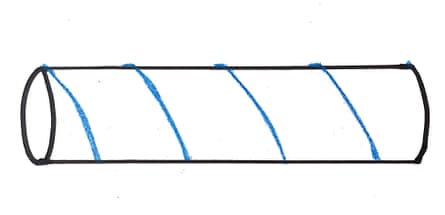Hello guzzlers,
Today’s puzzle is about a rod and a string.
A string is wound symmetrically around a circular rod. The string goes exactly four times around the rod. The circumference of the rod is 4cm and its length is 12cm. Find the length of the string.

This question was originally set twenty years ago in an exam given to 18-year-olds in 16 countries studying ‘advanced’ maths. (A-level and similar).
It was one of the most difficult questions in the test, with only 10 per cent of students overall getting the right answer. Top of the class was Sweden, where 24 per cent got it correct. In the US and France, the score was a measly 4 per cent. (The UK did not take part).
The problem, however, is rather beautiful. It requires no technical maths beyond what is taught in Key Stage 3 (11 to 14 year-olds). Can you spot the ‘simple’ way to solve it?
I’ll be back at 5pm GMT with the answer.
UPDATE: To see the answer click here.
PLEASE NO SPOILERS

My book Football School, co-written with Ben Lyttleton, is just out in paperback. Aimed at children aged 7 to 13, it uses football to explain subjects like maths, physics, English and history, covering everything from the origins of football chants 🎺 to when exactly footballers poo 💩.. It was shortlisted for the 2017 Blue Peter book of the year.
I set a puzzle here every two weeks on a Monday. Send me your email if you want me to alert you each time I post a new one.
I’m always on the look-out for great puzzles. If you would like to suggest one, email me.
Today’s puzzle comes from the first TIMMS (Trends in International Mathematics and Science Study) set by the IEA (International Associaton for the Evaluation of Educational Achievement). The students sat the test in 1995 and 1996.

Comments (…)
Sign in or create your Guardian account to join the discussion